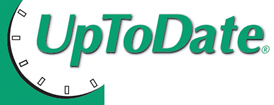 If you have not yet heard about the Pestana surgery review notes (download), these are a must have. There are a number of good review and question books for your surgery rotation, but nothing as useful and high yield as the Pestana notes. I read through these two days before my shelf exam and I know for a fact that it got me 4 or 5 questions that I would not have known otherwise. They are extremely high yield; almost universally, students admit that questions were asked on their surgery exam that seemed to be taken right from the Pestana notes.
If you have not yet heard about the Pestana surgery review notes (download), these are a must have. There are a number of good review and question books for your surgery rotation, but nothing as useful and high yield as the Pestana notes. I read through these two days before my shelf exam and I know for a fact that it got me 4 or 5 questions that I would not have known otherwise. They are extremely high yield; almost universally, students admit that questions were asked on their surgery exam that seemed to be taken right from the Pestana notes.
Click the link below to download the .doc file.
Pestana Review Notes for Surgery
As nearly every medical student in the country is currently using these review notes during their surgery clerkship, I though the least I could do was recognize the physician who provided them to us. Click here to see a recent award given to Dr. Pestana, MD, PhD.
He has also published a number of books including the Manual of Surgery and Fluids and Electrolytes in the Surgical Patient
(amazon links below).





 I recently
I recently 


 My name is Andrew and I am a first year resident training to be an ophthalmologist. I created ShortWhiteCoats to provide medical students, residents, and the public with all the information I spent so many hours looking for during medical school.
My name is Andrew and I am a first year resident training to be an ophthalmologist. I created ShortWhiteCoats to provide medical students, residents, and the public with all the information I spent so many hours looking for during medical school.








